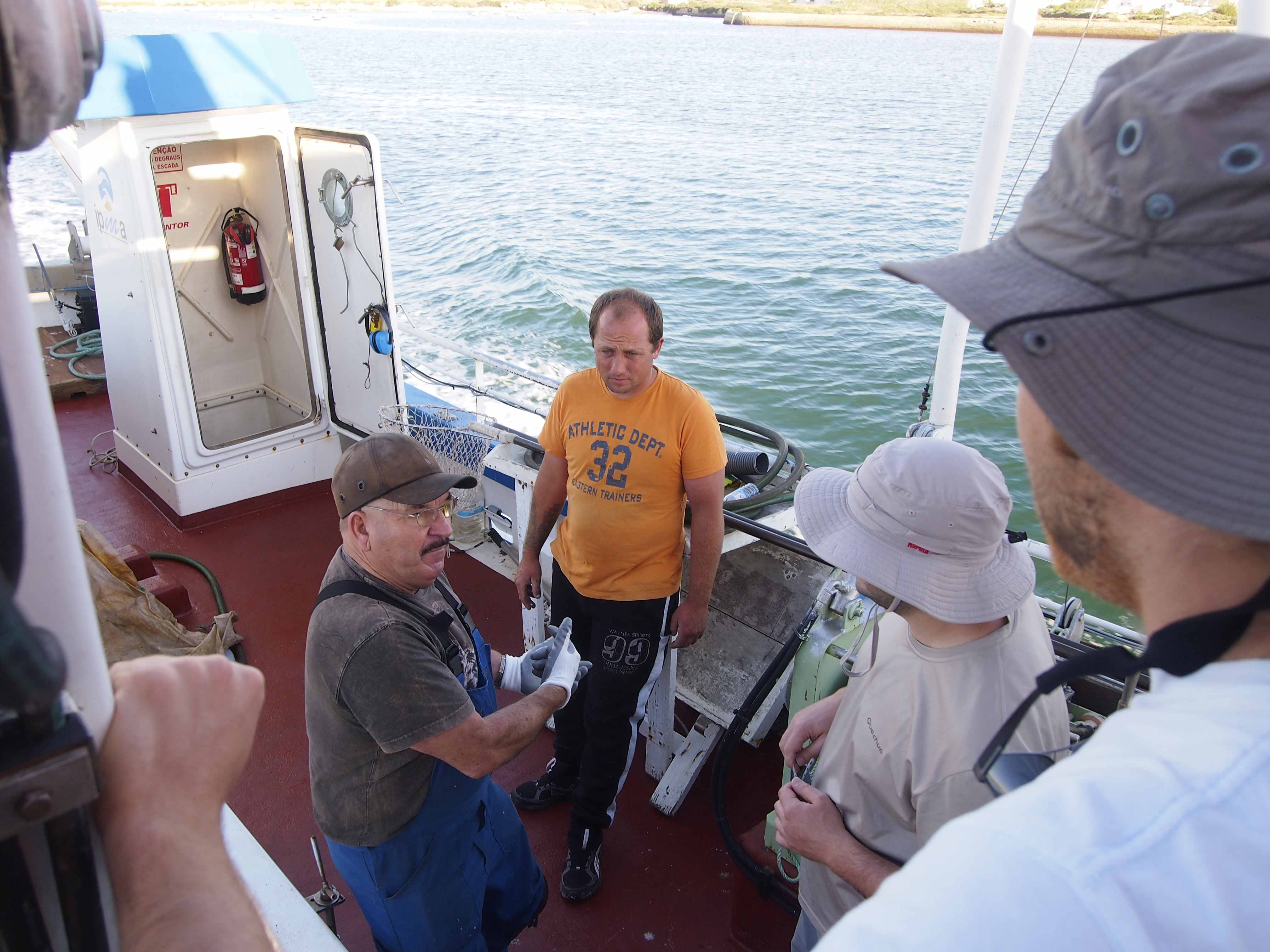First sea day, more UAV tests and settling in into the farm house
Tuesday was our first big day in the Algarve. Around 7.15am we set sail from Olhão harbor on the R/V Diplodus. This was to be the first time for us to see how operationally we would work together with the crew and amongst ourselves. Before setting out, we looked at our Neptus and HUB consoles and saw that 2 SPOT-tagged fish had been repeatedly surfacing just off the coast. These, based on Lara Sousa and Ana Couto's notes, were small(er) Mola around 65cm's in length. Based on their experience, smaller Mola's tend to pop up more frequently and therefore ideal targets for surveying for our experiments. Using this logic, we decided to use our first day to track these two fish. This turned out to be somewhat ambitious, given we had to get used to the the Diplodus and working in its tight spaces. Further, the fish had popped up to the surface about 16 km away from the mouth of the Olhão estuary from where our vessel was to exit to the sea.
So after more than an hour of commute time to the intended target, arriving around 8.45am, the Xplore-1 AUV was deployed. While the sea was not rough by any measure and terrific sun and breeze, a number of us (especially Kanna) got sea-sick. Operations continued however, with more excitement, when mid-day the vehicle simply "dissappeared" or so we thought. Stress mounted for Zé and Renato as even an acoustic beacon (used in nominal FEUP AUV operations) failed to identify where the vehicle was. After 1.5 hours, some adventures in climbing onto the roof of the pitching Diplodus to swap out Manta gatway boxes, however, the vehicle was spotted on the surface and recovered! It turned out that the vehicle was doing what it was told. The issue was the instructions; the T-REX system was commanded with a goal of doing 50m yo-yo's with a 300m X 300m survey pattern. However, a configuration file in the lower level DUNE controller was still setting a depth limit of 25m based on previous field trials at APDL in Porto! The operational lesson from this was that for every configuration change, we have another person check the settings of the operator for validation.
Meanwhile, in the farmhouse, UAV flights from a nearby field were ongoing if interrupted by the interest shown by some horses and donkeys in the farm! Flights resumed in the afternoon. However what continues to puzzle the team with regard to X8 02 and 03's (which have a different motor) is why the control parameters are not allowing the aircraft to move onto a new waypoint. Two finite state machines within DUNE and the ArduPilot controllers appear to be interacting in some strange way for these two vehicles, but apparently not so for X8-01. Diagnosis is ongoing....
Overall, we got a good idea of Diplodus operations, understood distances and commute times in the area, discovered operational bugs, showed that the tags are working well thus far. The day ended with a visit to a nearby restaurant for dinner. Not bad for a first day!















